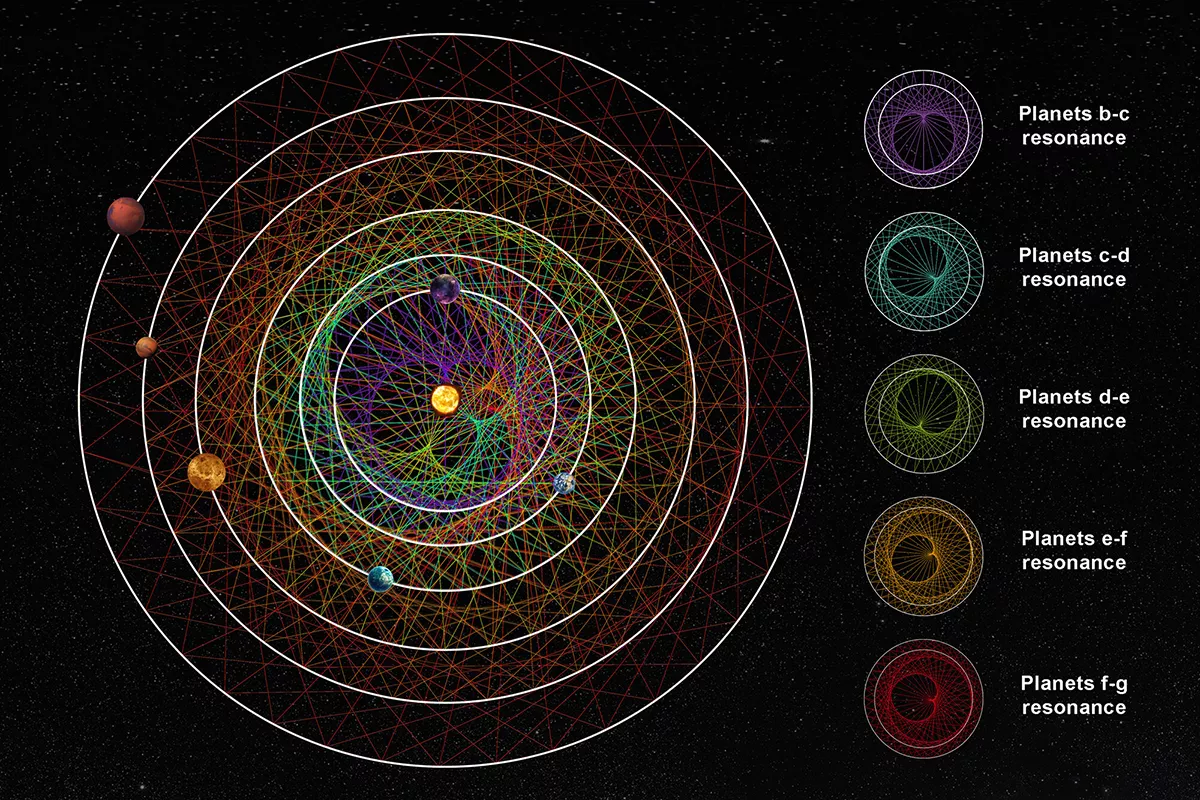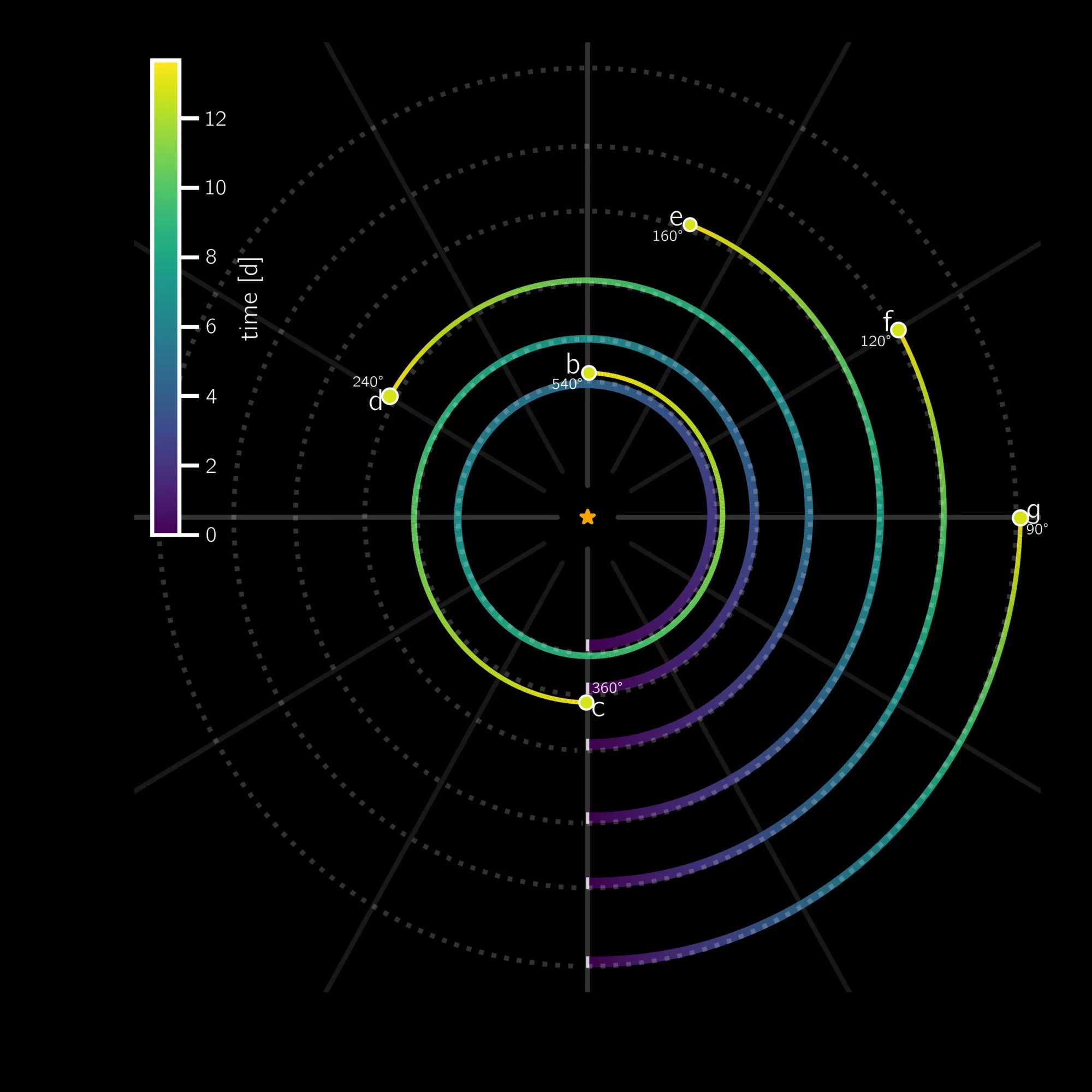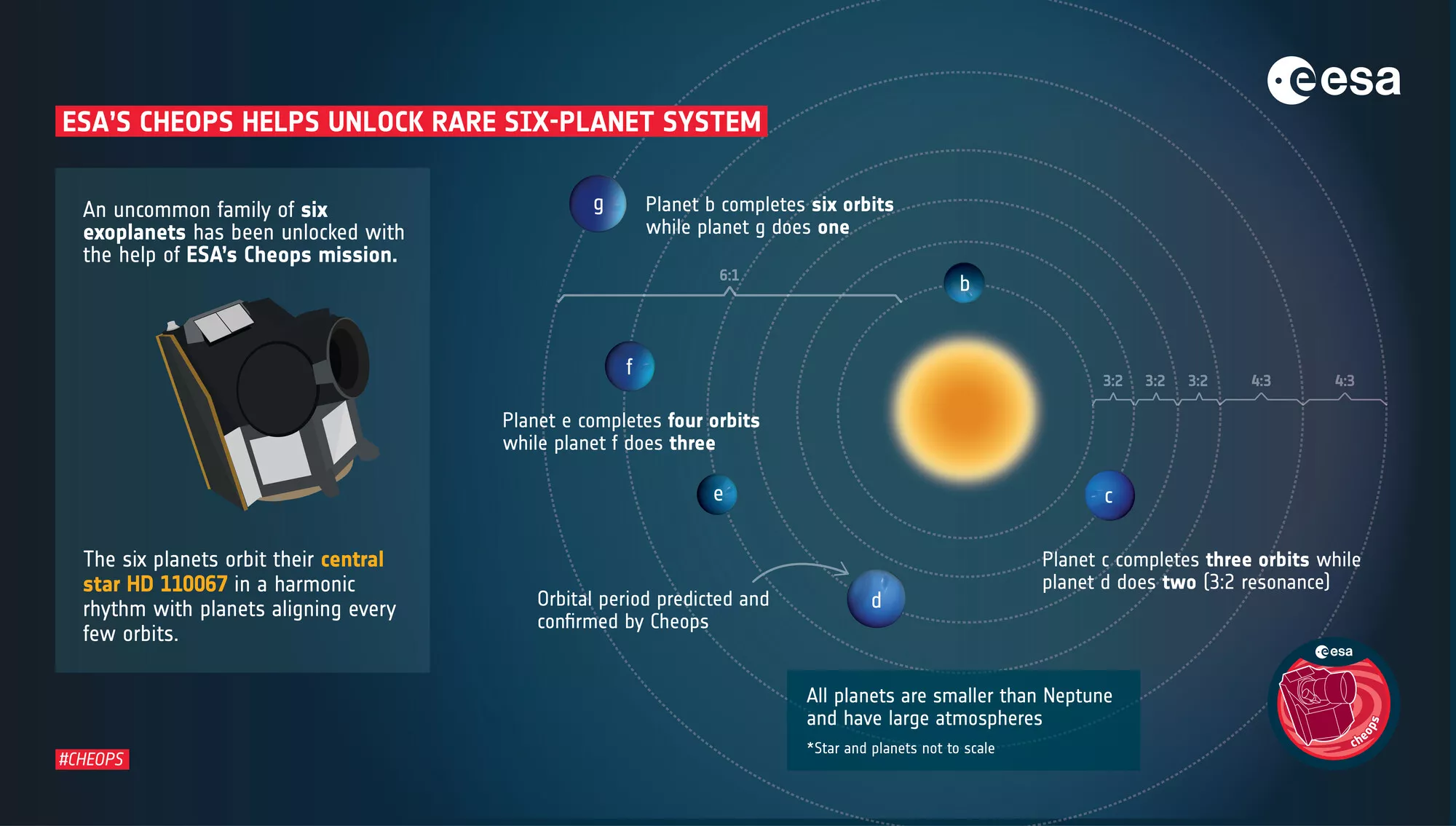A rare star system with six exoplanets has been unlocked with the help of ESA’s Cheops mission. The discovery is particularly valuable because the planets’ orbital configuration shows that the system is largely unchanged since its formation more than a billion years ago. ESA’s CHaracterising ExOPlanet Satellite (Cheops) has provided the crucial pieces of data to understand a mysterious exoplanet system that had been perplexing researchers for years. The paper presenting the results was published in the prestigious magazine Nature.
The star HD110067 lies around 100 light-years away in the northern constellation of Coma Berenices. In 2020, NASA’s Transiting Exoplanet Survey Satellite (TESS) detected dips in the star’s brightness that indicated planets were passing in front of the star’s surface. A preliminary analysis revealed two possible planets. One with an orbital period – the time it takes to complete one orbit around the star – of 5.642 days, and the other with a period that could not be determined yet.
Two years later, TESS observed the same star again. Analysing the combined data sets ruled out the original interpretation but presented two different possible planets. While these detections were much more certain than the originals, there was a lot about the TESS data that still did not make sense. That was when Rafael Luque of the University of Chicago and his colleagues became interested.
“That’s when we decided to use Cheops. We went fishing for signals among all the potential periods that those planets could have,” says Rafael.
Their efforts paid off. They confirmed a third planet in the system and realised that they had found the key to unlocking the whole system because it was now clear that the three planets were in an orbital resonance. The outer-most planet takes 20.519 days to orbit, which is extremely close to 1.5 times the orbital period of the next planet with 13.673 days. This in turn is almost exactly 1.5 times the orbital period of the inner planet, with 9.114 days.
Predicting other orbital resonances and matching them to the remaining unexplained data allowed the team to discover the other three planets in the system. “Cheops gave us this resonant configuration that allowed us to predict all the other periods. Without that detection from Cheops, it would have been impossible,” explains Rafael.
Orbitally resonant systems are extremely important to find because they tell astronomers about the formation and subsequent evolution of the planetary system. Planets around stars tend to form in resonance but can be easily perturbed. For example, a very massive planet, a close encounter with a passing star, or a giant impact event can all disrupt the careful balance. As a result, many of the multi-planet system known to astronomers are not in resonance but look close enough that they could have been resonant once. However, multi-planet systems preserving their resonance are rare.
“We think only about one percent of all systems stay in resonance,” says Rafael. That’s why HD110067 is special and invites further study. “It shows us the pristine configuration of a planetary system that has survived untouched.”
“As our science team puts it: Cheops is making outstanding discoveries sound ordinary. Out of only three known six-planet resonant systems, this is now the second one found by Cheops, and in only three years of operations,” says Maximilian Günther, ESA project scientist for Cheops.
According to László Kiss, Director General of the HUN-REN Research Centre for Astronomy and Earth Sciences (HUN-REN CSFK), a Hungarian member of the Steering Committee of the Cheops consortium: "The new discovery by Cheops brilliantly confirms that the operational concept formulated over a decade ago, the concept of an ultraprecise space photometer that can be directed to the sky almost anytime, anywhere, works excellently. We could have never known the true nature of the exotic system discovered by the American TESS space telescope without Cheops' flexible and adaptable data collection."
HD110067 is the brightest known system with four or more planets. Since those planets are all sub-Neptune-sized with atmospheres that are likely extended, it makes them ideal candidates for studying the composition of their atmospheres using the NASA/ESA/CSA James Webb Space Telescope and the ESA’s future Ariel and Plato telescopes.
Among the members of the research team led by Rafael Luque, there are also Hungarian researchers, listed in alphabetical order: Tamás Bárczy (ADMATIS Kft., Miskolc), Szilárd Csizmadia (Institut für Planetenforschung, Deutsches Zentrum für Luft- und Raumfahrt, Berlin), László Kiss (HUN-REN CSFK, Budapest), Attila Simon (Abteilung für Weltraumforschung und Planetologie, Physikalisches Institut, Universität Bern, Bern), and M. Gyula Szabó (ELTE Gothard Astrophysical Observatory, Szombathely).
Publication:
A resonant sextuplet of sub-Neptunes transiting the bright star HD 110067, Nature Journal
DOI: https://doi.org/10.1038/s41586-023-06692-3

The resonant planetary orbits of the HD110067 system. The small diagrams on the right illustrate mutual resonances, by depicting the orbiting planets from a top-down view with a certain time resolution, connected by lines of different colours at these time points. The large diagram on the left shows the same with all resonance pairs together. (Thibaut Roger, NCCR PlanetS)

The motion along the orbits of the six planets within a year of planet 'c.' Due to the highly precise orbital resonances, there is strong coupling between the planetary orbits. While planet 'c' completes a full 360° orbit around the HD110067 star, planet 'b' travels 540°, planet 'd' covers 240°, 'e' follows 160°, 'f' traces 120°, and 'g' completes a 90° arc. (Hugh Osborn (Universität Bern))

With the help of the ESA Cheops space telescope, a rare system consisting of six exoplanets has been revealed. Each member of the planetary family is smaller than Neptune, and their orbits around the star HD110067 are incredibly precise. While the closest planet to the star completes three orbits, the second planet goes around the star twice. It is said that their orbital periods are in a 3:2 resonance, meaning that for every three orbits of the innermost planet, the second planet makes two orbits around the star. In this sense, the six planets form a chain of resonances, with pairwise resonances of 3:2, 3:2, 3:2, 4:3, and 4:3, which means that the outermost planet completes one orbit while the innermost planet encircles the star five times. Based on Cheops' data, the orbital period of the third planet in the system could be confirmed, which was crucial in recognizing the rhythm of the entire system. This is the second planetary system in which Cheops has played a role in uncovering orbital resonances, the first being the TOI-178 system. (ESA)
.
An animation depicting the orbits of the six resonant planets around the star HD110067 to scale. Each planet produces a sound as it transits in front of the star's disk (indicated by the downward-pointing yellow arrow), and the frequency of these sounds follows the resonance patterns in the planets' orbital frequencies. The labels provide information about the discovery of the planets. The background of the animation is based on the TESS field (NASA/MIT/TESS and Ethan Kruse), with HD110067 at the centre, where the first indication of planets orbiting the star emerged. The relative sizes of the planets on the left are accurate, but their sizes relative to the star are, of course, much smaller. (Animation, music, and labels: Hugh Osborn (Universität Bern))
Source: esa.in